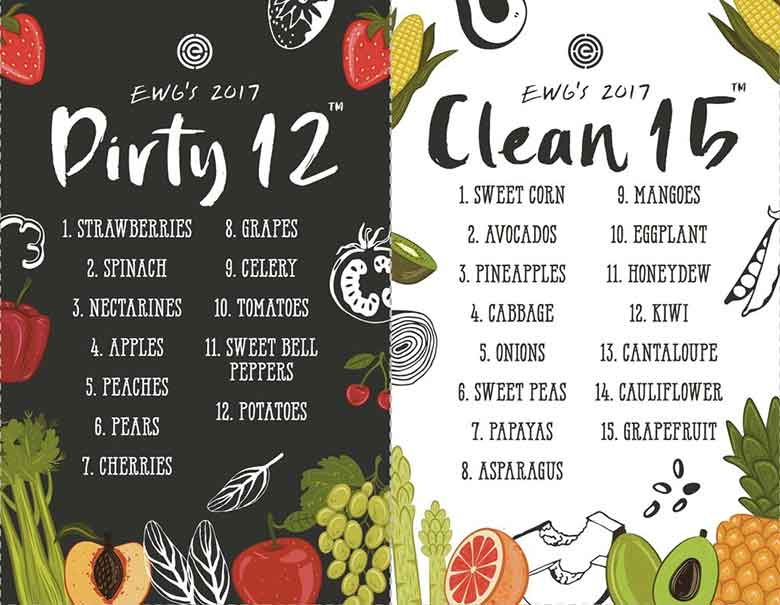The Dirty Dozen & Clean Fifteen

What is the Dirty Dozen and Clean Fifteen?
This concept has been introduced by the Environmental Working Group in an attempt to test and educate consumers on which fruits and vegetables have the highest and least amount of residual pesticides. As the name suggests, the dirty dozen refers to produce with the highest amount of pesticide contamination and the clean fifteen has the least amount.
Why does this matter?
By design, pesticides are toxic, designed to disrupt the normal bodily function of pests in order to remove them from crops and increase the yield. Research has shown they are linked to various health problems including hormone disruption, cancer, and organ toxicity. Limiting exposure to these toxins has been proven beneficial.
However, most people struggle with purchasing their produce 100% organic due to price and availability. So, the Environmental Working Group tests various produce crops each year to determine which types of products are best to buy organic and which types may be okay to buy conventionally. This list will allow you to make informed choices when shopping for produce and make the best decision for your family!
Do I need to avoid the dirty dozen?
Absolutely not! Consuming fresh foods over processed foods is always a better choice due to the more nutrients available in fresh foods. Comercial processed foods also contain chemicals and toxins, especially when bought non-organic. This list is simply to inform you, educate you, and give you the tools to make informed choices when it comes to diet and nutrition.
Why eat organic?
Non-organic, conventionally grown, foods usually cost less money. However, there are other costs associated with conventional foods that need to be considered as well. These costs can include the demand for more from the earth than it can produce and the long-term health costs associated with ingesting chemicals. There are other political factors we could discuss including government subsidization of industrial agriculture and foreign investment in commercial agriculture that all factor into the cost. For most people, the choice comes down to weighing the pros and cons of the potential health consequences of ingesting toxins versus the immediate cost of making the choice to purchase organic rather than conventional produce.
There are also ways you can offset the cost of organic produce should you make that choice. Committing to cooking completely or mostly from scratch, preserving in-season produce, home gardening and careful meal planning can cut down on costs tremendously.
This is a gradual process and takes time and thought to work within each individual budget. This is where the clean fifteen and dirty dozen come into play. It gives you a tool to quickly and conveniently check which produce items have the highest and least levels of residual pesticides.
